Vijay Kumar and Didi Pershouse joined our Life Saves the Planet series to speak on community managed natural farming in Andhra Pradesh, India and the hopeful prospects of regenerative farming for the future of our planet. Watch the video.
Tag: ERArehydrate
Landscape rehydration ‘better than dams’ in improving farm production, reducing fire risk, Major 2020
A project in Queensland, Australia has met with success in its efforts to rehydrate the landscape on the farmland property of Worona Station, improving biodiversity, water retention, and resistance to erosion and fire. Worona Station had been degraded and faced serious erosion issues, so Chris Le Feuvre, the owner, partnered with consultancy groups of NQ Dry Tropics and the Mulloon Institute in a project to rehydrate his land.
The project team has used a combination of planned grazing and small, low-tech dams to combat erosion problems. The grazing technique involves:
Splitting paddocks into small sizes and using large mobs of cattle grazing on rotation … grazing pasture more intensively while giving it longer to rest, [thereby] increasing carrying capacity.
Grazing in this way (which is evocative of Allan Savory’s Holistic Planned Grazing methodology) has resulted in increased pasture species diversity and boosted plant growth, allowing the Le Feuvre to double his herd size. Planned grazing has also reduced sediment runoff from the property. Sam Skeat, a grazing officer with NQ Dry Tropics, attests to the importance of grazing.
The plug-and-pond technique — also known as leaky weirs — involves small dam-like structures to lift the bed level of the water, which is then run onto the floodplain to grow pasture and recharge aquifers. While weirs have been strategically constructed, Mr. Skeat said grazing management was the most important tool to improve water retention in a landscape. ‘If you can use cattle as a tool to regenerate the grassland, you’ll get more infiltration, slow the flow, hold water up in the landscape and have you growing grass for longer’ [Major 2020].
Rehydrating landscapes can improve their resilience to extreme events, and improve their quality in the face of chronic problems like erosion. According to the Mulloon Institute Chairman Gary Nairn, the issue of degraded gullies and streams is a national concern. Gullies are created when parched land is unable to absorb rainwater, allowing it to run off. The sediment-filled runoff ends up in the ocean, polluting it.
Nairn sees land rehydration through planned grazing and related techniques as a better solution than building a massive, industrial-scale dam to retain water. The Australian government has been looking into building new large dams. Levels at Warragamba Dam, which supplies about 80 percent of Sydney’s water, have dropped to less than half capacity.
‘We’ve been able to demonstrate in Mulloon, if we repaired and rehydrated the catchment through to the Sydney water supply, you could store the equivalent of Warragamba Dam,’ he said [Major 2020].
Soak Up the Rain with Jan Lambert
This workshop follows Jan’s talk: Soak Up the Rain! What We Can All Do to Reduce Drought, Floods, Heat Waves and Severe Storms
Jan Lambert: environmental writer and editor of The Valley Green Journal
Learn more about Biodiversity for a Livable Climate: https://bio4climate.org/
Connect with us
Facebook: https://www.facebook.com/bio4climate
Twitter: https://twitter.com/bio4climate
Instagram: https://www.instagram.com/bio4climate/
Presented at Blessed Unrest conference via online, extending across weekends in April & May of 2020
#rain #floods #storms
Soak Up the Rain! What We Can Do to Reduce Drought, Floods, Heat Waves & Severe Storms: Jan Lambert
Did you ever stop to think about what happens with all the water that goes down the storm drains in your town or city every time it rains? Jan Lambert, even though a lifelong nature advocate, never gave that question much thought until 2014, when as an environmental journalist she learned about the profound and central role of the natural water cycle in regulating and moderating each region’s climate. It is not at all hard to understand how humans, by interfering with the natural flow of water through landscapes and the atmosphere, have damaged both land and climate. The good news is that by making some simple changes, we can restore the natural life-giving flow of water. It may surprise you to learn that it’s not how much water we use, but what happens after we use it, that really matters.
Jan Lambert: environmental writer and editor of The Valley Green Journal
Learn more about Biodiversity for a Livable Climate: https://bio4climate.org/
Connect with us
Facebook: https://www.facebook.com/bio4climate
Twitter: https://twitter.com/bio4climate
Instagram: https://www.instagram.com/bio4climate/
Presented at Blessed Unrest conference via online, extending across weekends in April & May of 2020
#drought #floods #heatwaves
Edible Landscaping Workshop with Sven Phil
This workshop follows Sven’s talk “Edible Landscaping”
Edible landscaping is the use of food-producing plants in the residential and public landscape. It combines fruit and nut trees, berry bushes, vegetables, herbs, edible flowers, along with functional ornamental plants into aesthetically pleasing designs.
Sven Pihl: Founder of CT Edible Ecosystems, LLC, Regenerative Land Planner/Designer and Permaculture educator
Learn more about Biodiversity for a Livable Climate: https://bio4climate.org/
Connect with us
Facebook: https://www.facebook.com/bio4climate
Twitter: https://twitter.com/bio4climate
Instagram: https://www.instagram.com/bio4climate/
Presented at Blessed Unrest conference via online, extending across weekends in April & May of 2020
#landscapes #vegetables #food
Close up on California in the era of climate change: a verdant vision for fire-prone land
Picture California in the 1700s, around the time the first Spanish missions appeared. It must have looked like heaven on earth for the 100,000s of native people living there [Ecological Society of America 2014], cradled between forested mountains and sparkling ocean. Meandering streams and rivers teeming with salmon criss-cross the valley and are knit together by a latticework of beaver dams. These porous little dams spread water over floodplains stretching in every direction, topping off aquifers and creating diverse habitat for an abundance of life. Wildfires come and go, and some are even manipulated by native peoples to diversify the resources in the landscape. But fires burn through relatively small patches before being damped out by ample ambient moisture, while triggering new growth in their wake.
This old-time paradise lacks the cozy thrill of watching a good Hollywood movie with a box of buttery popcorn, or the sense of security from a Central Valley harvest bountiful enough to nourish a nation. Indeed, our current era boasts a different kind of paradise – one that features convenient access to entertainment, great food, elegantly decorated homes and exotic vacations. This modern paradise is only occasionally interrupted by massive wildfires or storms that level whole neighborhoods, taps that run dry or are tainted with poison, deadly heat waves, or by news reports of such events. Those without the means to live in modern paradise are often the ones featured in the disturbing news reports.
Now imagine California in 2050, after ecosystems have been restored and deployed to rehydrate the landscape and to give Mother Nature the elbowroom she needs to go about her business without doing quite as much damage to human habitats, in spite of ongoing climate chaos. While we can’t and may not even want to go back to a pre-colonial natural California paradise, we can shore up our human spaces against the ravages of climate change by rehabilitating ecosystem processes in all the open space inside of and surrounding our existing cities and towns.
This means preventing any further urban sprawl into rural/wilderness areas. It means relocating people out of flood and fire prone rural/wilderness edges (as the Netherlands has done in its most low-lying areas [Bentley 2016]), and moving them into refurbished urban lots, while fully supporting them through the transition. It means thoughtfully investing in cities and towns to make them affordable and beautiful to reduce people’s compulsion to move into the fringes.
It means reconnecting rivers to their floodplains so that water has somewhere to go other than surging into cities when it floods, and so that floodplains, their wild inhabitants, and the underlying aquifers can benefit from a recharge of groundwater and nutrients. It means helping farmers transition to agricultural methods that conserve water, recycle nutrients, and restore biodiversity to their fields. And it means seeking out the best in applied ecological science to restore and manage wilderness areas in a way that favors biodiversity and therefore resilience.
Like the growing global call to reduce carbon emissions to net zero by 2025, the prospect of vast and thorough ecosystems restoration sounds utopian, naïve, impossible. However, serious solutions are needed to manage ever more extreme weather. Hotter, drier conditions wrought by climate change have made the land crisp and flammable, causing wildfires to spread further and faster in recent years. A century of wildfire suppression allowing fuel build-up, urban sprawl butting up against fire-prone wilderness areas, and the spread of invasive flammable cheatgrass have further contributed to the severity of recent fires.
Moreover, the frequency of rainy seasons that are extremely dry is predicted to increase, especially in southern California, where consecutive dry years will become more common [Swain 2018]. At the same time, the frequency of major flooding events, comparable to the 1862 flood that temporarily turned the Sacramento Valley into an inland sea, is predicted to triple by the end of this century.
Water – whether too much or too little – is at the heart of California’s troubles. With a Mediterranean climate defined by a winter rainy season and long dry summers, California is inherently prone to feast or famine when it comes to water. State water managers, therefore, have long been dealt the challenge of capturing and storing winter rainfall for summer use. Water storage today is achieved with reservoirs, underground aquifers and mountain snowpack, which slowly releases water from melting snow during spring and summer.
The state’s water management system may be due for a redesign, though. For one thing, snowpack is no longer a reliable storage system. Not only is there less snowpack overall, but what there is bears a greater risk now of “rain on snow” events that melt it all at once in a giant gush. Furthermore, levees are not high enough for the scale of flooding that is predicted to become more common, and the water infrastructure overall is in need of repair to the tune of $34 billion [Mount 2017].
The state’s aquifers are a natural storage system that contribute about one third to annual water supply, but they have been unregulated and severely overdrawn during droughts, in some cases leading to land subsidence[10] [Martin 2018]. In response, however, the government passed the Sustainable Groundwater Management Act in 2014, which makes local governments responsible for monitoring and recharging the aquifers within their jurisdictions.
Localities can fulfil their legal obligations at least in part by restoring natural processes that recharge groundwater, such as giving rivers more space to meander and restoring native vegetation. Plants protect and build soil, rendering the soil more sponge-like and able to absorb and hold water, allowing water to percolate into aquifers. Vegetation also shades soil surfaces, limiting evaporation. These principles hold true for all healthy ecosystems, which is to say biodiverse ecosystems, whether in the context of wilderness or agriculture. Biodiversity fosters ecosystem stability, productivity and resilience.
At this turning point for water management in California, what if the state were to redesign its aging system in a way that places a much higher value on hydrological functionality? Improving the land’s hydrology would mean facilitating the ground’s absorption of precipitation (such as the Yolo Bypass Wilderness Area has done), slowing water down rather than isolating it from the land with straight, narrow and constrained waterways ultimately emptying into the ocean.
Slowing down water would recharge aquifers and revitalize streams, rivers, wetlands, grasslands and forests. Expansive functional forested ecosystems could in turn reactivate local water cycling through transpiration and rain recycling, cooling the land in the process. Moistening and cooling the land by enhancing its absorptive capacity could create fire breaks and reduce flammability, thus mitigating the threat of out-of-control wildfires.
Moistening and cooling the land by enhancing its absorptive capacity could create fire breaks and reduce flammability, thus mitigating the threat of out-of-control wildfires. |
Disturbed, dry hydrological systems are associated with more severe wildfires. In Borneo, researchers [Taufik 2017] found that massive wildfires coincided with years characterized by large areas of hydrological drought, where surface or groundwater levels had dropped due to extended rainfall deficits. Land use changes including deforestation and canalization to drain wetlands exacerbated hydrological drought, leading to more acres burned during wildfires.
How to restore ecosystems? On a small scale, Californians are already succeeding in this by removing levees to reactivate the floodplain [Fountain 2018], introducing beavers to restore streams and surrounding habitat [Goldfarb 2018],[11] and adaptively grazing livestock in wilderness areas to thin out vegetation, thus reducing fuel loads and replacing it with soil-nourishing manure and urine [Greenwood 2018]. Farmers in the Yolo Bypass Wilderness Area have adapted their practices to allow for seasonal flooding of their fields [Sommer 2001]. Farmers throughout the state participate in the department of agriculture’s Healthy Soils Program by implementing conservation practices to build soil and enhance ecosystem processes, such as carbon sequestration.
Urban areas too are learning to manage water in a way that better withstands boom or bust rainfall patterns. While cities everywhere are normally designed to remove stormwater as quickly as possible, some cities are beginning to see stormwater not so much as a nuisance, but as a valuable resource [Shimabuku, Diringer, Cooley 2018]. For example, the small agricultural town of Gonzalez, CA, modified its municipal code to facilitate low-impact development measures, such as the removal of portions of curb to allow rainwater to drain into vegetated areas. Santa Monica set a city-wide goal of becoming water self-sufficient by 2022 and plans to meet this goal, in part, by capturing more than 500 million gallons of stormwater for treatment and reuse. San Francisco now requires new developments of a certain size to capture and reuse stormwater on site.
San Francisco also recently passed a bill to allow denser development near transit lines within the city, potentially alleviating the housing crisis that’s driving sprawl. (A similar bill was defeated at the state level, unfortunately, due in part to a NIMBY-like resistance to sharing more spacious urban neighborhoods with lower-income newcomers.)
All these initiatives are a promising start. To stave off ever-longer fire seasons, alongside more severe flooding and drought, however, these innovations cannot remain isolated examples. They need to become the state-wide norm for water management, urban design and land stewardship. Such changes are urgently needed not only in California, profiled here as an instructive example of life in the era of climate change, but everywhere.
As in every community everywhere on Earth, California must take an honest, clear look at its choices: reimagine paradise as a place where we embrace the vibrancy of human diversity in dense, walkable urban neighborhoods, and cultivate biodiversity in all open green spaces; or tempt Mother Nature to destroy everything we love as we cling to an ideal of paradise as being the accumulation of manufactured luxuries, while ignoring the environmental and social costs.
John Reinhardt: Reviving a River
Learn more about Biodiversity for a Livable Climate: https://bio4climate.org/
Please donate to our ecosystem restoration work: https://bio4climate.org/donate/
John Reinhardt: President Mystic River Watershed Association
Presented at Revitalizing Ecosystems in Greater Boston to Survive Climate Change conference at Harvard University on March 31, 2018
#river #restoration #reviving
Water
With the rise of civilizations, humans began having significant impacts on bodies of water and the water cycle. The early “hydraulic civilizations” appeared along major rivers (Nile, Tigris-Euphrates, Indus, Yellow River and others), changed watercourses and built canals for agriculture and transportation. As populations and cities expanded, demand for food led to soil depletion while the built environment created growing areas of impermeable surfaces. Disruption of water cycles has reached a peak since the industrial revolution, with large areas of land covered with impermeable surfaces, and rainwater and waste rapidly shuttled away from land into the oceans. [Kravčik 2007: 42 ff.]
Eco-restoration requires a shift in thinking about water management and fortunately there are many successful water restoration projects under way, along with a strong theoretical basis to guide them. Water management is the key to cooling the biosphere, regenerating photosynthesis and drawing down carbon on billions of acres. Included in this section is a brief discussion of wetlands, which will be expanded in the next Compendium release.
Several eco-restoration examples are included here, and many were explored at our 2015 Restoring Water Cycles to Reverse Global Warming Conference at Tufts University – all speaker videos are available online. https://bio4climate.org/program-tufts-2015/.
Overview
Healthy Soils Australia, Walter Jehne 2015. Walter Jehne is a microbiologist, soil and climate scientist who has spent the past several years teaching and promoting the use of nature’s tools to address destruction of land and water cycles, and educating on methods important in addressing global warming. The text below represents excerpts (condensed and edited) from the paper, “Restoring Regional Rainfalls: Background Brief for Outcomes, Australia Forum on Vegetation-Rainfall Relationships”:
Contrary to the dominant assumptions that global warming is due to elevated atmospheric carbon concentrations,
- Systemic climate changes such as aridification began in the 1970s well before CO2 levels or its temperature effects increased abnormally.
- Water-based processes govern most climate effects and over 95% of the earth’s heat dynamics for billions of years, including some 80% of the natural greenhouse effect.
- These hydrological heat dynamics have been ignored or deemed “secondary feedbacks” to the CO2 greenhouse effect because water is assumed to be a dominant determinant of our climate, and humans could not possibly have altered these global cycles to cause the anthropogenic climate changes
- The hydrological processes are highly complex and difficult to model, and were therefore excluded in IPCC (Intergovernmental Panel on Climate Change) assumptions and models, whereas the minor CO2 component of the greenhouse effect is more readily modelled, and provides a simple marketable explanation of its “cause.”
- Because of these IPCC assumptions, policy and response options have largely ignored the dominant hydrological determinants on climate, the effects of land management, and impacts these changes may have on climate, water and bio-system stability.
Yet we have greatly altered the earth’s natural hydrology and thus heat dynamics by:
- Clearing over 75% (6.3 billion hectares or 15.75 billion acres) of the earth’s primary forest, greatly altering the land’s albedo and heat reflectance as well as transpiration and latent heat fluxes that cooled vast regions.
- Oxidizing and eroding organic matter from some 10 billion hectares of soils thereby reducing the ability of landscapes to infiltrate, retain and supply water to sustain cooling transpiration and latent heat fluxes and the drawdown of carbon from the air by plants via photosynthesis.
- Exposing vast areas of such degraded, cropped and bare soils to erosion which has dispersed 3 billion tonnes of additional dust aerosols into the air where it nucleates warming humid hazes that retain heat in the biosphere.
- Heating bare exposed soils to greatly increase their re-radiation of heat which massively increases greenhouse warming effects.
- Increasing the absorption of solar radiation by humid haze micro-droplets [resulting in] global dimming (while in the liquid phase), as well as the absorption of re-radiated heat (while in the gaseous phase) to warm the lower atmosphere via the water vapour greenhouse effect.
- Reducing regional rainfalls often by up to 30% due to the increase in persistent haze micro-droplets which are too small to coalesce into raindrops and precipitate by themselves.
- Increasing surface humidity due to the persistent humid hazes, thus lowering evaporation rates by up to 10% and reducing latent heat fluxes which transfer heat out of the biosphere into space.
- Reducing the production of the biological precipitation nuclei from forests that would help coalesce the humid haze micro-droplets to form dense clouds with high albedos that reflect 33% of solar radiation out to space, thereby regulating global temperatures.
- Preventing the nucleation of haze and cloud droplets into raindrops which lowers rainfalls and the level and longevity of transpiration, photosynthesis and cooling latent heat fluxes.
- Impairing the night-time escape of re-radiated heat to space via natural “radiation windows” due to the impaired nucleation and precipitation of such “blocking” humid micro-drop hazes.
- Increasing sustained high pressures above the cleared, bare heated soils that prevents the inflow of cool moist air from oceans, its precipitation and the associated cooling heat fluxes.
- Extending such high pressure over vast regions and periods to accentuate the aridification of bio-systems which readily collapse to deserts with further human land degradation. [Healthy Soils Australia 2015: 1-2]
Given this reality we need solutions that go beyond just reducing future CO2 emissions but also:
- Cool regions and the climate so as to offset dangerous warming and its feedback effects.
- Draw down carbon back into its safe soil sinks so as to reduce its greenhouse effect.
- Restore the resilience of agro-ecosystems and communities to the extremes and secure their essential water, food and bio-material needs via just, safe low carbon futures. [Healthy Soils Australia 2015: 8]
- Regenerate natural hydrological processes by land management which captures water in soils, wetlands, aquifers and biomass
- Maintain healthy biodiverse soils to Restore microbial drivers that govern these cooling hydrological processes by emitting condensation nuclei that lead to rainfall.
- Support the biological sequestration of carbon from the air into stable soil humates and glomalin to enhance the water held in the soil reservoirs that sustain the cooling latent heat fluxes.
- Support the production of microbial precipitation nuclei that coalesce the warming humid hazes into dense high albedo clouds that cool regions and generate critical cooling rainfalls.
- Promote the nucleation and enhancement of rainfall in key regions to maintain the latent heat fluxes, green vegetated habitats and the radiation windows that enhance nighttime cooling effects.
Only by regenerating our forests, soils and landscapes can we now restore the hydrological cooling processes that helped govern the natural heat dynamics and buffered climate of the blue planet. Such regeneration is now our only option to offset the dangerous climate feedbacks resulting from the warming induced by our landscape degradation and its associated abnormal rise in CO2 levels.
Fortunately viable practical options exist to enable us to do and directly benefit from this, at grass roots community level: tree by tree, hectare by hectare, region by region. While we face a global emergency and must all take responsibility for it, it can only be addressed locally via practical action on the ground by communities driven by their own self interest in securing a safe climate and future.
The good news is we can still avoid the pending extremes and collapse provided we focus on direct local action urgently to regenerate the health of each square metre of soil and each forest and tree. We have the abundant degraded land, sunshine, CO2, waste biomass and nutrients to do it with. To grow more green areas; by regenerating our soils, forests, rangelands and even re-greening deserts.
We can do this if we enhance the infiltration, retention and availability of each raindrop in our soils so that the regenerated ‘in soil reservoirs’ sustain healthy green growth over larger areas for longer. This will happen naturally, synergistically, as plant growth enhances the structure of the soil by increasing its carbon content which in turn aids its water holding capacity and nutrient dynamics.
Just as nature did over the past 420 million years in colonizing and greening the earth’s land surface, these same processes are now our only option to regenerate our soils, forests and landscape and re-secure our safe climate and future. [Healthy Soils Australia 2015: 7-11]
Water Article Summaries
Ellison 2017. “Trees, forests and water: Cool insights for a hot world” may be one of the few articles in the mainstream literature relating to climate that puts hydrological cooling effects before carbon in importance for addressing global warming, although dynamics of water and carbon are closely intertwined.
Forests and trees must be recognized as prime regulators within the water, energy and carbon cycles. If these functions are ignored, planners will be unable to assess, adapt to or mitigate the impacts of changing land cover and climate. Our call to action targets a reversal of paradigms, from a carbon-centric model to one that treats the hydrologic and climate-cooling effects of trees and forests as the first order of priority. For reasons of sustainability, carbon storage must remain a secondary, though valuable, by-product. [Ellison 2017: 51]
This paper is discussed further under Forests.
Evans, Griggs 2015. Carol Evans is a fisheries biologist and Jon Griggs is a rancher in northeastern Nevada. They have worked together over twenty-five years to restore overgrazed lands to health through planned grazing of cattle, which also brings water, trout, beavers and biodiversity to the riparian areas of Maggie and Susie Creeks. In the driest state in the U.S., with less than ten inches of rain a year, they now have perennial streams and wet meadows after five years of the worst drought in memory.
Susie Creek, ca. 1989 (left) and 2015 (right) after five years of drought. Elko, Nevada
Kravčík 2007. Michal Kravčík and co-authors are Slovakian hydrologists who have developed what they call a new water paradigm for managing water cycles, floods and drought.
In a healthy water cycle, while some rain enters streams and rivers directly and is carried off to sea, most rain water is absorbed by the soils in situ, where it lands. The rain gives life to the soil and sets many biological processes in motion, where it is essential for stable soil carbon storage and cooling the biosphere. This includes evapotranspiration from plants which returns water as vapor to the atmosphere where the water condenses and falls as rain. The cycle then begins anew. Kravčík et al. call this the “small water cycle” (i.e., local water cycle) where most water goes through its cycles in a regional area or smaller. The “large water cycle” is the exchange of water between oceans and land, and “above land water circulates at the same time in many small water cycles which are subsidized with water from the large [continental or global] water cycle.” [Kravčík 2007: 16]
Civilizations disturb healthy water cycles and accelerate the runoff from land by creating impermeable surfaces (including degraded farmlands and rangelands), and preventing water from remaining in place to sink into soils or to forcing it to run off the land, causing floods and often carrying valuable topsoil with it. Furthermore, water systems have been engineered to move water away from its source to the oceans. Water, with its growing use as a means to dispose of farming, industrial and human wastes, is even seen as a nuisance. As a result, less water returns to continents from the oceans than is lost from continents to oceans, which leads to desiccation of soils, severe drought, wildfires, desertification, and a measure of sea-level rise. There is a growing understanding that these phenomena, often attributed to climate change, may in fact also be a function of disrupted water cycles.
Restored urban land, Kosice. November 2005 (left), September 2006 (right).
Heat from the sun drives these earthly water cycles. Small water cycles are local, circulating water within a relatively small area. Latent heat causes water to evaporate; heat is absorbed in the process of evaporating water and does not result in an increase in local temperature. We thus do not experience latent heat as an increase in temperature. However, when there is less water available for evaporation, less solar energy is transformed into latent heat and more solar energy is transformed into sensible heat, heat you can feel as increased temperature. This is the heat that we are increasingly experiencing as global warming.
A great deal of heat is moved from the surface of the earth to the upper atmosphere by evaporation and transpiration of water by plants, contributing to significant cooling of the biosphere – to illustrate it takes 540 calories to turn 1 gram of water to vapor; by comparison it takes only 80 calories to melt 1 gram of ice.
Draining of land, that is, runoff and floods, can be reversed through comprehensive conservation of rainwater which maintains the sponge-like absorption capacity of soils and maintains many aspects of soil health, resilience, biodiversity and productivity. Renewal of small water cycles over land can temper extreme weather events and ensure a growth in water reserves by eliminating heat islands and problematic distribution of atmospheric moisture.
Nobre 2010. Antonio Nobre is an Amazon scientist who has studied the biotic pump (see also Makarieva), and tells how he was once told by an indigenous wise man,
“Doesn’t the white man know that, if he destroys the forest, there will be no more rain? And that if there’s no more rain, there will be nothing to drink, or to eat?” I heard that . . . [ and thought], “Oh, my! I’ve been studying this for 20 years, with a super computer; dozens, thousands of scientists, and we are starting to get to this conclusion, which he already knows!” A critical point is the Yanomami have never deforested. How could they know the rain would end? This bugged me and I was befuddled. How could he know that?
Some months later, I met him at another event and said, “Davi, how did you know that if the forest was destroyed, there’d be no more rain?” He replied: “The spirit of the forest told us.”
The equatorial region, in general, and the Amazon specifically, is extremely important for the world’s climate. It’s a powerful engine for evaporation. From a satellite viewpoint, atmospheric water flow can look like a geyser, which is underground water heated by magma transferred into the atmosphere. There are no geysers in the Amazon but trees play the same role. They, like geysers, transfer an enormous amount of water from the ground into the atmosphere. Nobre continues:
There are 600 billion trees in the Amazon forest, 600 billion geysers. That is done with an extraordinary sophistication. They don’t need the heat of magma. They use sunlight to do this process. On a typical sunny day in the Amazon a large tree manages to transpire 1,000 liters of water. If we take all of the Amazon, which is a very large area, and add up all the water that is released by transpiration, “the sweat of the forest,” an incredible amount of water is evaporated into the atmosphere: 20 billion metric tons of water per day. . . . This river of vapor that comes up from the forest and goes into the atmosphere is greater than the Amazon River.”
The Amazon River itself is the largest river on Earth, it carries one fifth of all the fresh water, it releases 17 billion metric tons of water a day into the Atlantic Ocean, smaller than “the river in the sky.” To evaporate the 20 billion tons of water released by trees it would take 50,000 of the largest hydroelectric plant in the world, Itaipus, which generates 14 GW of electricity, 30% of Brazil’s power. The Amazon does this with no technology, at no cost.
Schwartz 2016. Judith Schwartz once again travels the world to collect stories of lands restored, of lives revived, this time to glean insight from restorers of water. She demonstrates that many of our assumptions about managing water are derived from engineering, not biology. When biology is the focus of the water and rainfall question the problem is redefined, and clarified. Solutions that had been invisible become apparent, and provide the opportunity for far more effective responses – even in some of the driest places on earth. Floods and droughts become manageable, even preventable entirely. Two of the innovators mentioned in Water in Plain Sight, Michal Kravčík and Rajendra Singh, spoke at Biodiversity for a Livable Climate’s 2015 Restoring Water Cycles conference, as did Judy.
Singh 2007. Rajendra Singh, the “Water Man of India,” tells the story of how he helped over 1,000 villages restore water and abundance through the use of ancient, low-technology land management. Providing water for people, farms and animals, such efforts countered the ill effects of industrialization and reversed flight to the cities. Says Singh:
I am neither a scientist, nor a professional water engineer nor a climate change expert. I am a small constructive worker of Gandhi and I mobilize the civil society and the community for action on natural resources management and conservation for rural uplift in India. Here I am recording the impact of the above work on the ecology of 6,500 square km area in Alwar district from 1985‐2007. Since 1985, 8,600 small water harvesting talabs [a form of check dam] in 1,068 villages of Alwar district covering 6,500 square km area have been built. This has resulted in the shallow aquifer recharge in groundwater bringing up the water table from about 100‐120 meters depth to 3‐13 meters at present. The area under single cropping increased from 11 per cent to 70 per cent out of which area under double cropping increased from 3 per cent to 50 per cent bringing prosperity to the farmers. The forest cover, which used to be around 7 per cent increased to 40 per cent through agro‐forestry and social forestry, providing sufficient fuel wood and sequestering carbon from atmosphere [Singh 2007: 5].
A dramatic example of how large restoration efforts are built from small, local efforts. In the ten years since this paper, Tarun Bhagat Sangh has continued to expand its work.
Jim Laurie: Back to 300 (Nature Wants to be Wet and Cool)
Many strategies exist for taking carbon dioxide out of the atmosphere and rehydrating the continents. Jim Laurie will review a broad vision of the potential for each ecosystem to be restored and to sequester carbon, building a graphic showing the global potential and timescale.
Jim Laurie, Restoration Ecologist, Biodiversity for a Livable Climate
Presented at Biodiversity for a Livable Climate “Scenario 300: Making Climate Cool” conference at Washington D.C. on April 30, 2017
Learn more about Biodiversity for a Livable Climate: https://bio4climate.org/
Please donate to our ecosystem restoration work: https://bio4climate.org/donate/
#naturalsolutions #ecosystemrestoration #ecorestoration
Landscape Heroes: Carbon, Water and Biodiversity
Landscape Heroes: Carbon, Water and Biodiversity
See program below, with links to videos!
A collaboration with the Ecological Landscape Alliance, NOFA (Northeast Organic Farming Association), NOFA Organic Land Care, and Biodiversity for a Livable Climate
UMass Amherst, Tuesday, January 31st: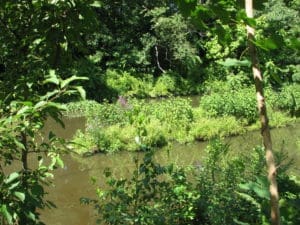
An in-depth, inspiring conversation on Carbon Sequestration and learn what practical steps you can take to ensure that your interactions with the landscape make positive impacts.
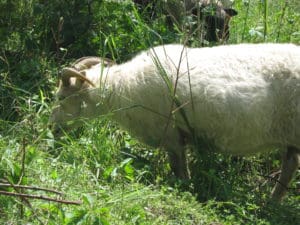
This day-long program included many land care practitioners including land managers, farmers, researchers, and conservationists about what is possible for soil carbon and landscape restoration. From yards to farms to greenways to commons to gardens, how we treat our soils impacts the climate.
We know soil is alive. In fact, in one tablespoon of healthy soil there are more microorganisms than there are people on this planet. A highly functional, thriving soil has the capacity to 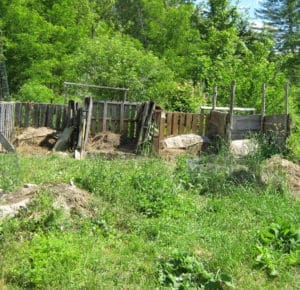 store carbon, absorb water like a sponge, and support a thriving landscape. For years we have viewed soil through its physical and chemical properties, and we are beginning to realize the crucial role of biology in soil function and health. Now we are finding that from back yards to farms to greenways to commons to gardens, how we treat our soils has implications for the global climate.
store carbon, absorb water like a sponge, and support a thriving landscape. For years we have viewed soil through its physical and chemical properties, and we are beginning to realize the crucial role of biology in soil function and health. Now we are finding that from back yards to farms to greenways to commons to gardens, how we treat our soils has implications for the global climate.
Join Biodiversity for a Livable Climate, the Ecological Landscape Alliance, the Northeast Organic Farming Association (NOFA/Mass), and the Organic Land Care of NOFA/CT for a day-long program that offers practical tips and applications for how you, too, can be part of the climate solution. Whether you are a gardening enthusiast, farmer, conservation/restoration specialist, or landscape professional, there are positive changes that you can make. Whether you work to reduce compaction using biology, actively build soil carbon, increase soil biodiversity and resilience above and below ground, or heal degraded landscapes, you will walk away with practical tips to apply to your own setting. The synergy of many individuals taking small steps can result in big impacts!
Come learn from experts in the field such as carbon expert and author, rancher and activist Courtney White with his new book Two Percent Solutions for the Planet. Additional carbon experts include Eric Fleisher, Chip Osborne, Paul Wagner, Bruce Fulford, Bryan O’Hara, Hugh McLaughlin, PhD, and Jim Laurie.
Visit Ecological Landscape Alliance for speaker bios and conference schedule.
Speakers

Eric T. Fleisher is the Director of Horticulture for the Battery Park City Parks Conservancy. Battery Park City is an urban area located in south Manhattan in New York City. This park is a 92-acre planned community created through regenerating healthy soil and reusing local materials. As the Director of Horticulture for over 25 years, Eric's vision for Battery Park City’s ecological approach has made this community a role model for other urban and rural areas.

Bruce Fulford is the owner of City Soil and Greenhouse, a company based in Boston that works on agricultural projects ranging from community gardens to commercial farms. Bruce's publications, educational outreach, and presentations have contributed to the development of more efficient and equitable resource management.
Bruce works closely with organizations focused on land remediation and agricultural business development. He chairs the Massachusetts Audubon Society's (MAS) Boston Nature Center the Environment Committee, is a member of the MAS Council and its Climate Change committee, the Ecological Landscape Association, and the US Composting Council.

Jim Laurie, Restoration Ecologist, is a biologist from Rice University and a pioneer in biological remediation of waste water. He was the technical manager of the world’s largest “Living Machine” project to clean raw municipal sewage with no toxic chemicals. The facility, through a grant from the EPA, processed 80,000 gallons/day using the “living machine” methodology invented by ecological visionary, and Buckminster Fuller Award recipient, John Todd.
Prior to that, for twenty years Jim was a biologist and trainer in the chemical industry in Houston, TX, where his work with living machines resulted in processing effluent cleaner than possible with conventional technology. Jim has also been a passionate advocate for Holistic Management of grasslands in the past decade. He began studying with Allan Savory twenty years ago in Texas, has spoken about Holistic Management at Harvard, MIT, Tufts, the Stockholm Environment Institute, and at meetings of the Massachusetts Climate Action Network (MCAN) and Northeast Organic Farmers Association (NOFA), and has been instrumental in spreading the message in New England. Jim is also co-founder of a lively and sophisticated Google Group, Soil-Age, and he invites you to join!
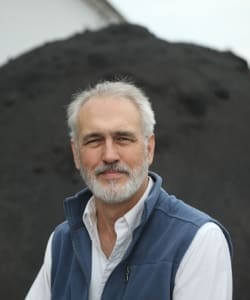
Hugh McLaughlin, PhD, PE has a professional consulting practice in Chemical Engineering. He is a biochar engineer and the inventor of the NextChar Machine. Hugh has numerous publications on biochar and biomass derived heat production. He co-authored “All Biochars are not Created Equal and How to Tell them Apart” (2009) and “U.S. Focused Biochar Report: Assessment of Biochar’s Benefits for the United States of America” (2010).
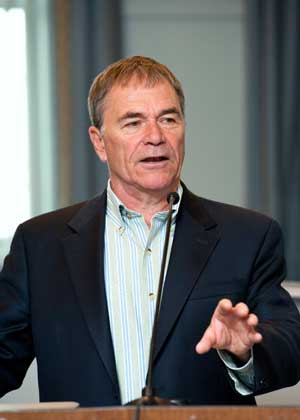
Charles “Chip” Osborne, Jr. is the President of Osborne Organics, LLC, and Founder of the Organic Landscape Association. He has over 10 years experience in developing sustainable landscapes through natural turf management, and has 35 years experience as a professional horticulturist.
Chip has become a regular lecturer for the Northeast Organic Farming Association (NOFA), is a board member of Beyond Pesticides, and Chairman of the Marblehead, Massachusetts’ Recreation and Parks Department. In 1998 Chip and Pat Beckett co-founded The Living Lawn Project in Marblehead, MA, one of the United States' first natural lawn demonstration displays. This project is a nationally-recognized, living example that abundant, healthy grass can be grown without the use of pesticides and synthetic fertilizers.
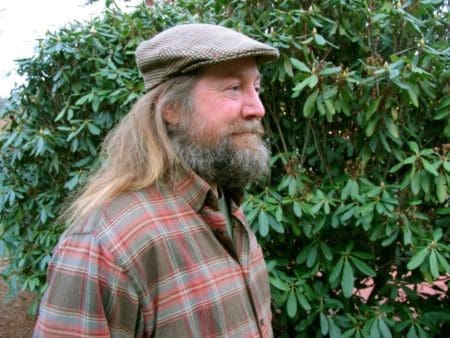
Bryan O’Hara intensively farms three acres of market vegetables in Lebanon, Connecticut, at Tobacco Road Farm. He began his career in 1990, and over the years, through trial and error, has developed an extremely successful no-till, pesticide-free system. He was named the Northeast Organic Farming Association’s (NOFA) Farmer of the Year in 2016.
O’Hara is the author of No-Till Intensive Vegetable Culture: Pesticide-Free Methods for Restoring Soil and Growing Nutrient-Rich, High-Yielding Crops. This book is a helpful guide for all aspects of gardening, with a particular focus on no-till techniques.

Paul Wagner is the president of Greener Pastures Organics, a property care company located in Southampton, N.Y. He has over 15 years of experience in science-based organic tree, shrub and lawn care. Paul is a Board Certified Master Arborist, as well as a NYS Certified Nursery Professional with a degree in Ornamental Horticulture.
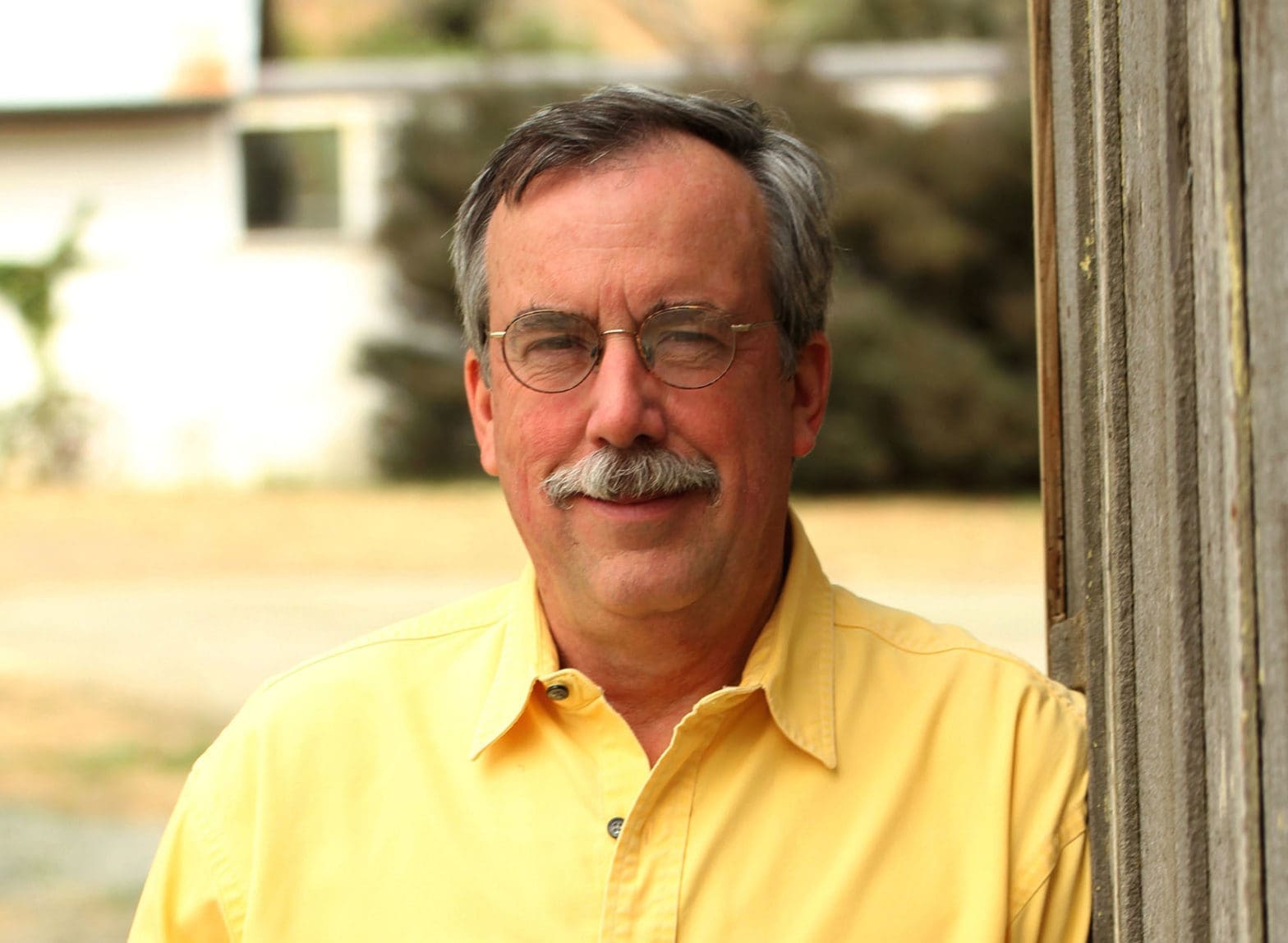
Courtney White is an author and regenerative land management activist. In 1997, he cofounded the Quivira Coalition, a nonprofit in Santa Fe, New Mexico, that works with progressive ranchers and farmers on regenerative agriculture, ecological restoration, and collaborative conservation. As Executive Director, he helped implement these practices as well as explain their hopefulness in numerous publications and speaking events. In 2015, Courtney left the organization to become a full-time writer. His specialty is explaining complex topics via compelling stories.
Morning Session Focus
Understanding Carbon in the Landscape
8:35 – Two Percent Solutions for the Planet
Courtney White, Author, Regenerative Land Management Activist
Video
The potential for large-scale removal of carbon dioxide (CO2) from the atmosphere through plant photosynthesis and related land-based carbon sequestration activities is both large and largely overlooked. Strategies and co-benefits include: enriching soil carbon, no-till farming with perennials, employing climate-friendly livestock practices, conserving natural habitat, restoring degraded watersheds and rangelands, increasing biodiversity, and producing local food. In Two Percent Solutions for the Planet, Courtney White profiles fifty different strategies that work together economically and ecologically with the aim of reducing the atmospheric content of CO2 while producing substantial co-benefits for all living things.
9:30 – Understanding Compaction
Eric T. Fleisher, Landscape Designer
Video
Severely compacted soil has poor structure and soil foodweb diversity which results in poor carbon harvesting. T. Fleisher will explain compaction causes and cures (across all managed landscapes).
10:00 – Digging Deep into Soil Practices
Bryan O’Hara, Farmer
Video
Continuing the compaction discussion, Mr. OHara will focus on boosting soil biology with no-till farming, cover cropping, and Korean Natural Farming practices. The common thread is the focus on beneficial fungal growth and the role that Fungi play in carbon sequestration.
10:45 – Building Biodiversity
Jim Laurie, Restoration Ecologist
Video
Restoring biodiversity to the land is the key to a healthy water cycle, building carbon rich organic matter in soils, and improving plant health and immunity to disease. Mr. Laurie will show how the symbiosis of mycorrhizal fungi, insects, nematodes, and beaver once built soils tens of feet deep. Jim will also discuss how improving the infiltration of rainwater into the soil can ameliorate the flood and drought cycles we have seen in recent years.
11:15 – Moderated Panel with Morning Speakers
Courtney White, T. Fleisher, Bryan O’Hara, Jim Laurie
Video
Afternoon Session Focus – Humans as Agents for Positive Change
Speakers offer their “Top 5 List” of what YOU can do!
1:15 –Understanding Soil Biology: The Trophic Levels
Paul Wagner, Certified Arborist
Video
A review of trophic levels and how to ensure that at least the first three levels are present to build landscape health, including discussion of specific techniques. Beyond the basics of bacteria and fungi, Mr. Wagner will help us to understand the third trophic level (the shredders, predators and grazers).
1:45 – The Importance of Compost
Bruce Fulford, Owner, City Soil and Greenhouse, Boston
Video
Mr. Fulford explains compost from multiple feedstock streams and how to apply it for best long term soil stabilization. We will learn about the carbon release of traditional compost applications and how different feedstocks have different long term effects. Every plant pulls in carbon and we learn how to maximize the results.
2:15 – Biochar’s Role in the Landscape
Hugh McLaughlin, Ph.D., Biochar Engineer, CTO NextChar, Inc.
Video
Creating biochar is an ancient technique brought forward in time to keep carbon both stable and active in the soil for much longer than compost. What does it take to access and use modern biochar – and what is needed to inoculate it before large scale application? Dr. McLaughlin will help us to understand net carbon – carbon sink, carbon neutral, carbon emitting – and how we can work toward the goal of creating carbon sinks.
2:45 – Turf – Ecological Options
Chip Osborne, Horticulturalist
Video
Mr. Osborne takes a close look at how grass roots and their seasonal surging (expansion and contraction) can help to create soil. We learn to increase biodiversity by allowing broadleaved plants (weeds!) to mix into conventional turf and how this can heighten the quality of soil life supported by root exudates. With lawns covering large expanses of the landscape, even small changes can have a big impact.
3:30 – Moderated Panel with Afternoon Speakers
Chip Osborne, Paul Wagner, Hugh McLaughlin, Bruce Fulford
Video
4:00 – Wrap-up
Courtney White
Video
NOTE: This presentation was shortened due to an incoming snowstorm!
One person makes a small contribution but many people, acting with intent and carbon awareness, can make a much bigger contribution to carbon sequestration and global climate stability. Take the information from today and work it into all of your land management decisions – whether you’re managing (or helping to manage) a back yard, a farm, or an institutional land management program.
Jim Laurie & His Homeschool AP Biology Students: Nature Wants to Be Wet
Learn more about Biodiversity for a Livable Climate: https://bio4climate.org/
Please donate to our ecosystem restoration work: https://bio4climate.org/donate/
Restoration ecologist Jim Laurie illuminates the vital connections between water cycles and biodiversity, describing numerous keystone species – from microbes and worms to beavers, burrowing animals and ruminants – which increase water infiltration and retention in landscapes. By partnering with these species we can jumpstart the restoration of stable local water cycles. Jim also introduces students from his Homeschool Advanced Placement Biology / Restoration Ecology course who perform a short play called “Symbiosis”, including sketches on “Making Holes to Improve the Small Water Cycle” and “Stopping Flash Floods and Cleaning Water.” Jim will finish with a brief description of a new initiative in state government: since 2009 the Mass. Division of Ecological Restoration has helped partners remove 40 dams and restore approximately 2,000 acres of coastal wetland.
Presented a Biodiversity for a Livable Climate’s “Restoring Water Cycles to Reverse Global Warming” conference October 16th-18th, 2015 at Tufts University.
#biological #ecology #watercycles












